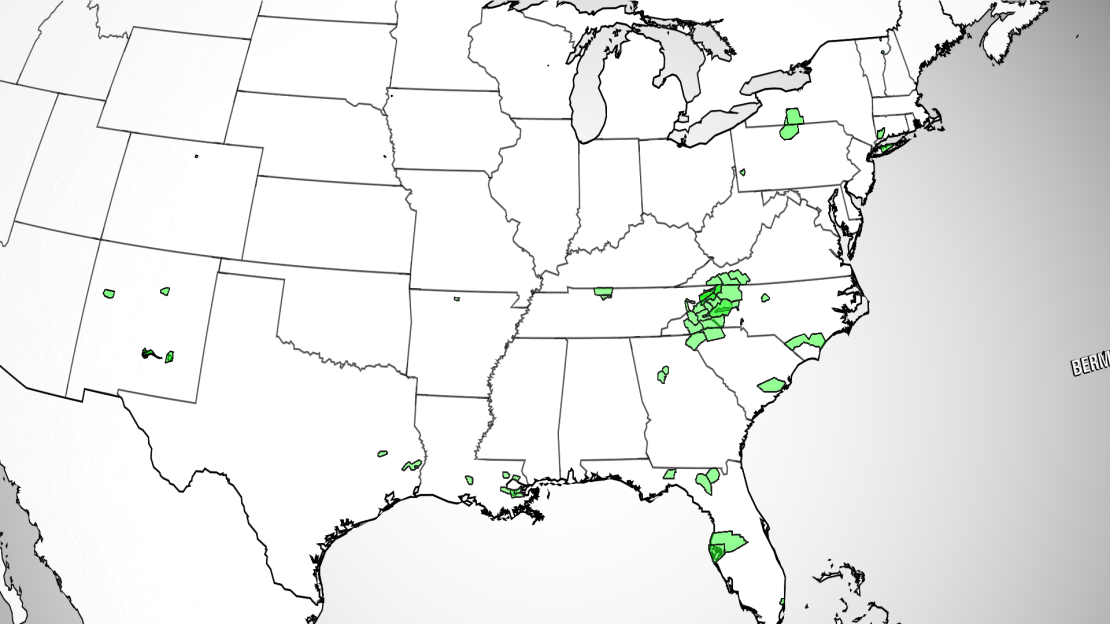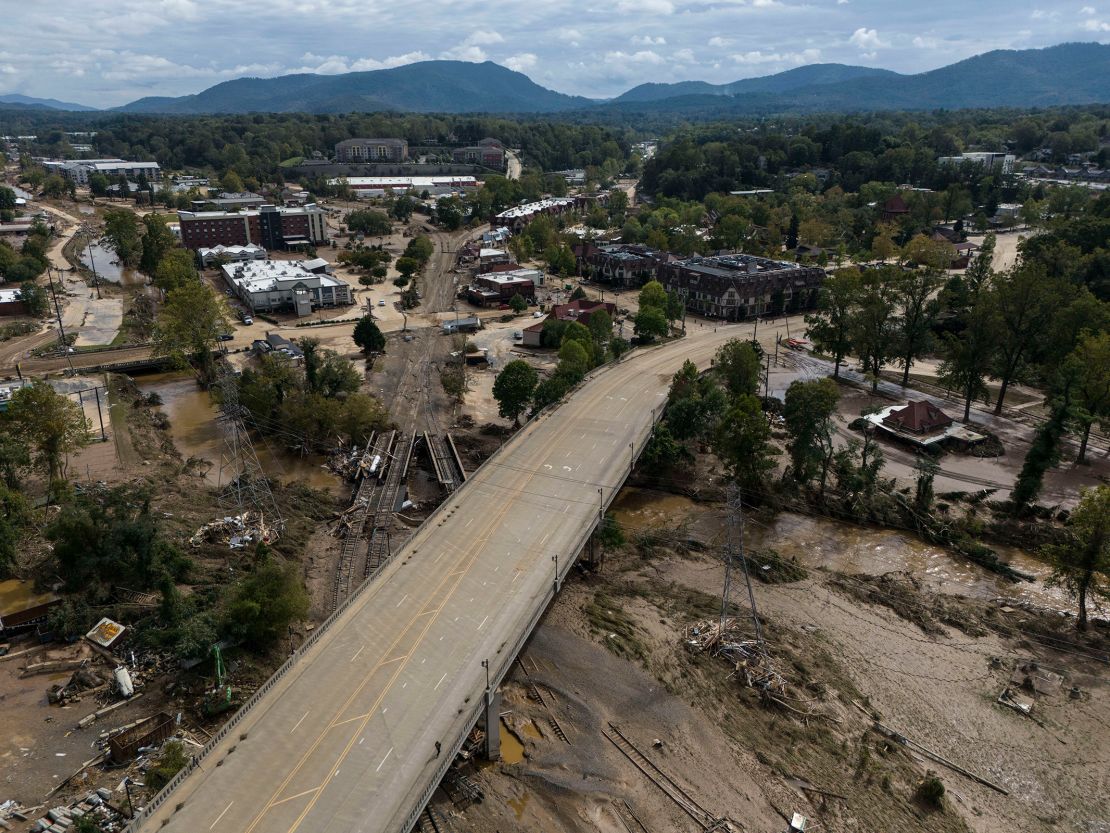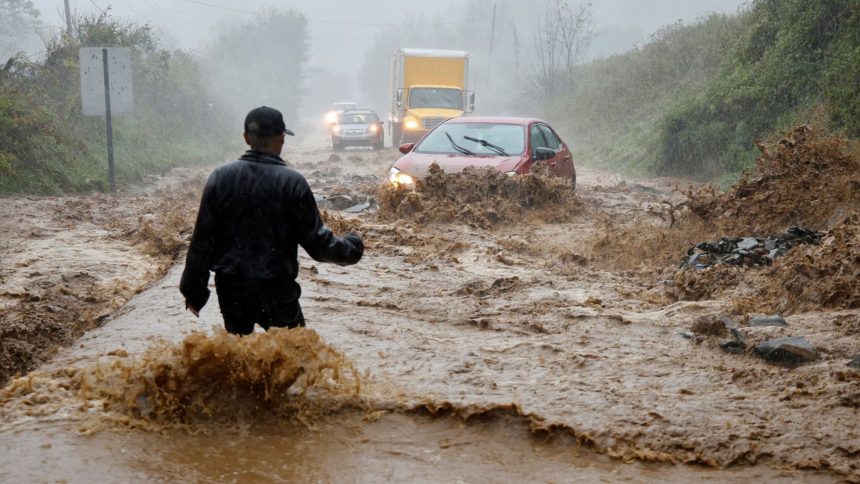CNN
—
Extreme weather has thrashed the United States this year with more flood emergencies than any other year — a deadly, sobering statistic that scientist say paints a picture of the future as the planet warms.
An unprecedented 91 flash flood emergencies have been issued by the National Weather Service this year, more than any other year since this most-dire language was first used in 2003.
All flash flood warnings are a sign of a very dangerous situation, but flash flood emergencies are the most rare – accounting for around 1% of flash flood warnings since 2019 – for a reason.
“It’s the ultimate tool in our toolkit,” said Kate Abshire, a hydrologist and leader of the weather service’s National Flash Flood Services. “It’s a tool to amplify the idea that there’s an extreme threat to life and property and the potential for catastrophic damage.”
The warnings are just one measure of how chaotic and devastating flooding has been so far this year. It has killed dozens of people, altered entire landscapes and cost the United States billions of dollars.
The most recent flash flood emergency unfolded in Roswell, New Mexico, last weekend. The desert city received about half a year’s worth of rain in just 24 hours. Roadways turned into raging rivers under the cover of darkness Saturday evening. Hundreds were trapped and rescued and at least two people were killed.
It was exactly the kind of extreme rainfall event scientists expect as the planet warms.
The most intense rain events are getting heavier and more frequent as the world warms due to fossil fuel pollution. A warmer atmosphere is capable of soaking up more moisture like a sponge and wringing it out in the form of gushing rainfall.

As a result, “we most definitely are” already seeing the consequences of climate change reflected in this year’s catastrophic flash flooding events, according to Astrid Caldas, a senior climate scientist with the Union of Concerned Scientists.
“Extreme rain events have been happening a lot more and are likely to continue to happen a lot more,” Caldas continued.
Development around waterways and in mountainous areas is also putting people in harm’s way and increasing the risk for catastrophic, life-threatening flooding disasters, Caldas, who specializes in community resilience, explained.
“It’s about where we build, how we change the natural ways of the water” Caldas said. “Water is always going to go the easiest way that it can, so the fact that we have built so much, particularly along the banks of rivers … that’s why flooding events are also increasing in the US.”
Tropical trouble
The final tally of flash flood emergencies fluctuates greatly year-to-year and is highly dependent on changing weather patterns and tropical systems that impact the US.
Tropical systems are fueled by an immense amount of moisture to begin with, which they often unleash in the form of some of the most intense possible bouts of rainfall.
That’s been the case this year. Rainfall from hurricanes Debby, Francine, Helene and Milton accounted for about half of all flash flood emergencies issued this year, according to a CNN review of archived warnings.
Helene dumped never-before-seen rainfall amounts of up to 30 inches in western North Carolina and caused catastrophic flood damage that left many locales unrecognizable.
Helene accounted for more than 30 flash flood emergencies on its own this year; there were 29 total flash flood emergencies last year.

Like all heavy rain events, tropical systems are also being supercharged in a warming world.
They’re also getting an added boost from extremely warm bodies of water like the Gulf of Mexico which not only help them to rapidly intensify, but also inject additional moisture into the atmosphere.
Oceans are heating up as temperatures trend upward around the globe. The Gulf of Mexico spent a large portion of the summer and early fall at record-warm levels, acting like rocket fuel for tropical systems.
All of the hurricanes to hit the US this year were fueled by the Gulf.
Compounding disasters
Increasing extreme weather as result of climate change also helped to create a flood disaster.
The South Fork and Salt fires torched thousands of acres of southern New Mexico in the early summer, burned hundreds of homes and businesses and killed at least two people.
Heavy rain then pounded the scorched area not long thereafter and triggered multiple flash flood emergencies. Because the ashen soil, stripped of its ground cover, was less capable of absorbing rainfall, it became a raging river of water and debris that caused more damage.
This fire-to-flood disaster was just one varietal of dozens of such disasters this year.
All told, there have been at least 45 flood-related major disaster declarations this year, according to FEMA. And two dozen billion-dollar extreme weather disasters have already occurred in the US in 2024, CNN previously reported, a number that is straining FEMA’s disaster relief funding.
Flood-related disasters will only continue to increase as the atmosphere and oceans warm and combine to create a potent cocktail capable of creating a new normal.
“The past does not predict the future anymore,” Caldas warned.
CNN’s Ella Nilsen contributed to this report.



